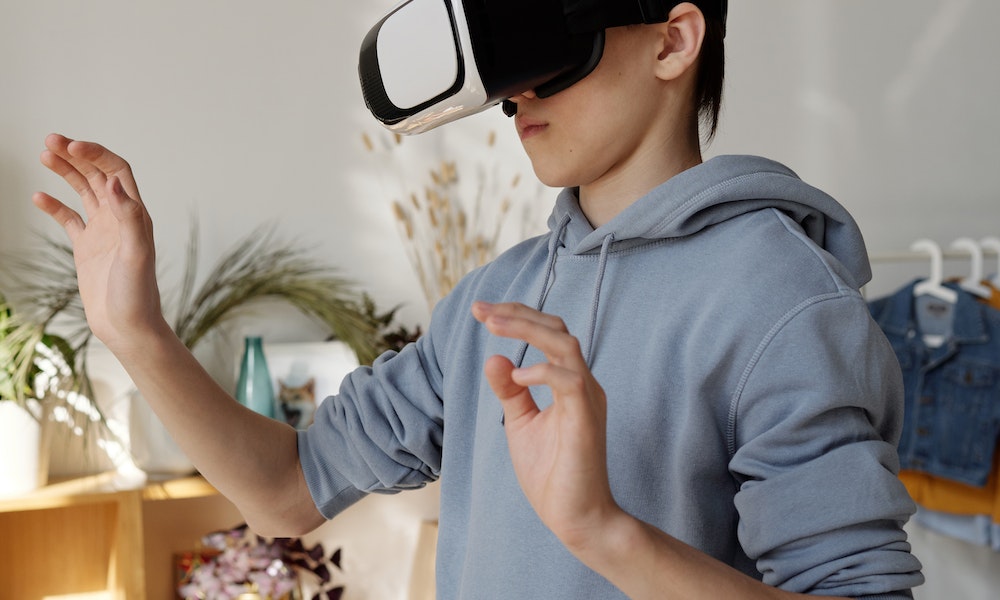7 Important Impacts of VR and AR on Education

Impacts of VR and AR on Education, Virtual Reality (VR), and Augmented Reality (AR) are technologies that are changing the way we learn, interact, and experience the world around us. In education, VR and AR have already shown tremendous potential to revolutionize the way we teach and learn. In this article, we will discuss seven important impacts of VR and AR on education.
In recent years, there has been a growing interest in the use of VR and AR in education. The immersive and interactive nature of these technologies has the potential to transform the traditional classroom experience into a more engaging, interactive, and effective learning environment.
Read More: Top 10 EdTech Tools to Enhance Student Learning
What are VR and AR?
Impacts of VR and AR on Education, Virtual Reality (VR) is a computer-generated environment that simulates a real-world experience. It is usually achieved through the use of a headset that immerses the user in a completely digital environment.
Augmented Reality (AR) is a technology that overlays digital information onto the real-world environment. AR is usually achieved through the use of a smartphone or tablet.
How VR and AR are used in Education?
VR and AR are used in education to enhance the learning experience, provide access to real-world experiences, make learning fun and interactive, and support personalized learning. Let’s explore these impacts in more detail.

Impact #1: Enhancing Learning Experience
Impacts of VR and AR on Education, VR and AR provide a new level of immersion and engagement in the learning experience. Students can interact with the subject matter in a way that was not possible before. For example, VR can transport students to a different time and place, allowing them to experience historical events firsthand. AR can provide students with 3D models of complex objects, making it easier to understand complex concepts.
Impact #2: Making Learning Fun and Interactive
Impacts of VR and AR on Education, VR and AR can make learning more engaging and interactive. By adding a layer of interactivity and fun to the learning experience, students are more likely to be motivated and engaged in the material. For example, a VR game can teach physics concepts in a fun and interactive way, making it easier for students to learn and remember.
Impact #3: Providing Access to Real-World Experiences
VR and AR can provide access to real-world experiences that may not be possible otherwise. For example, VR can simulate a field trip to a different country, allowing students to experience different cultures and customs without leaving the classroom. AR can provide virtual tours of museums and historical sites, giving students access to exhibits and artifacts that may not be available locally.

Impact #4: Improving Retention and Recall
Impacts of VR and AR on Education, VR and AR can improve retention and recall by providing a more immersive and memorable learning experience. Studies have shown that students who learn in a VR or AR environment are more likely to remember the material compared to traditional classroom instruction.
Impact #5: Enabling Personalized Learning
Impacts of VR and AR on Education, VR and AR can support personalized learning by allowing students to learn at their own pace and in their own way. For example, VR can provide simulations that adapt to each student’s skill level, providing a more personalized learning experience. AR can provide interactive textbooks that allow students to explore topics in more detail and at their own pace.
Impact #6: Supporting Inclusive Learning Environments
Impacts of VR and AR on Education, support inclusive learning environments by providing access to learning materials that may be difficult for some students to access otherwise. For example, students with visual impairments can use AR to access 3D models of objects, allowing them to explore and learn about them in a way that is not possible through traditional learning methods.
Impact #7: Preparing Students for Future Careers
Impacts of VR and AR on Education, VR and AR are increasingly being used in industries such as engineering, healthcare, and manufacturing. By incorporating these technologies into education, students can develop the skills and knowledge needed for future careers. For example, VR can provide simulations of complex engineering processes, allowing students to gain hands-on experience in a safe and controlled environment.
Impacts of VR and AR on Education, Conclusion
VR and AR are transforming the traditional classroom experience into a more engaging and effective learning environment. These technologies provide a new level of immersion and interactivity, making learning fun, interactive, and memorable. Additionally, VR and AR provide access to real-world experiences and support personalized learning, preparing students for future careers in a variety of industries.
Read More: Top 10 EdTech Trends To Watch Out For In 2023

FAQs
- What is the difference between VR and AR?
- VR is a computer-generated environment that simulates a real-world experience, while AR overlays digital information onto the real-world environment.
- How are VR and AR used in education?
- VR and AR are used to enhance the learning experience, provide access to real-world experiences, make learning fun and interactive, and support personalized learning.
- What are the benefits of using VR and AR in education?
- VR and AR can improve retention and recall, provide access to real-world experiences, support personalized learning, and prepare students for future careers.
- Are there any limitations to using VR and AR in education?
- Some limitations include cost, accessibility, and the need for specialized equipment.
- What are some examples of how VR and AR are used in education?
- Examples include virtual field trips, interactive textbooks, and simulations of complex processes.












One Comment